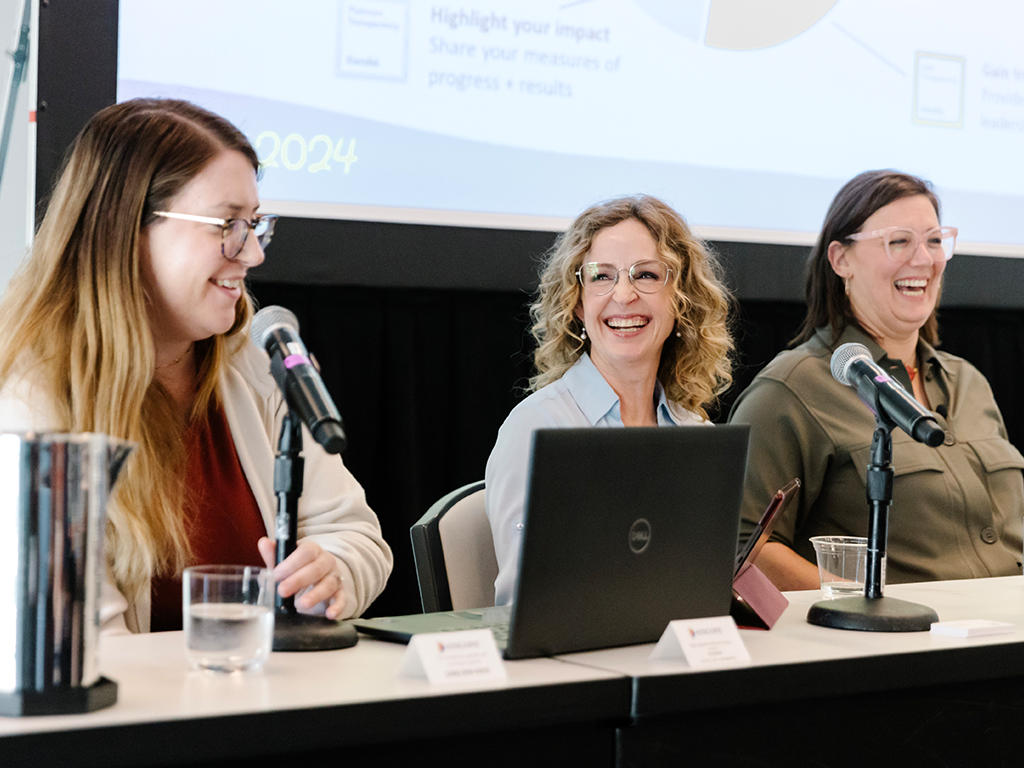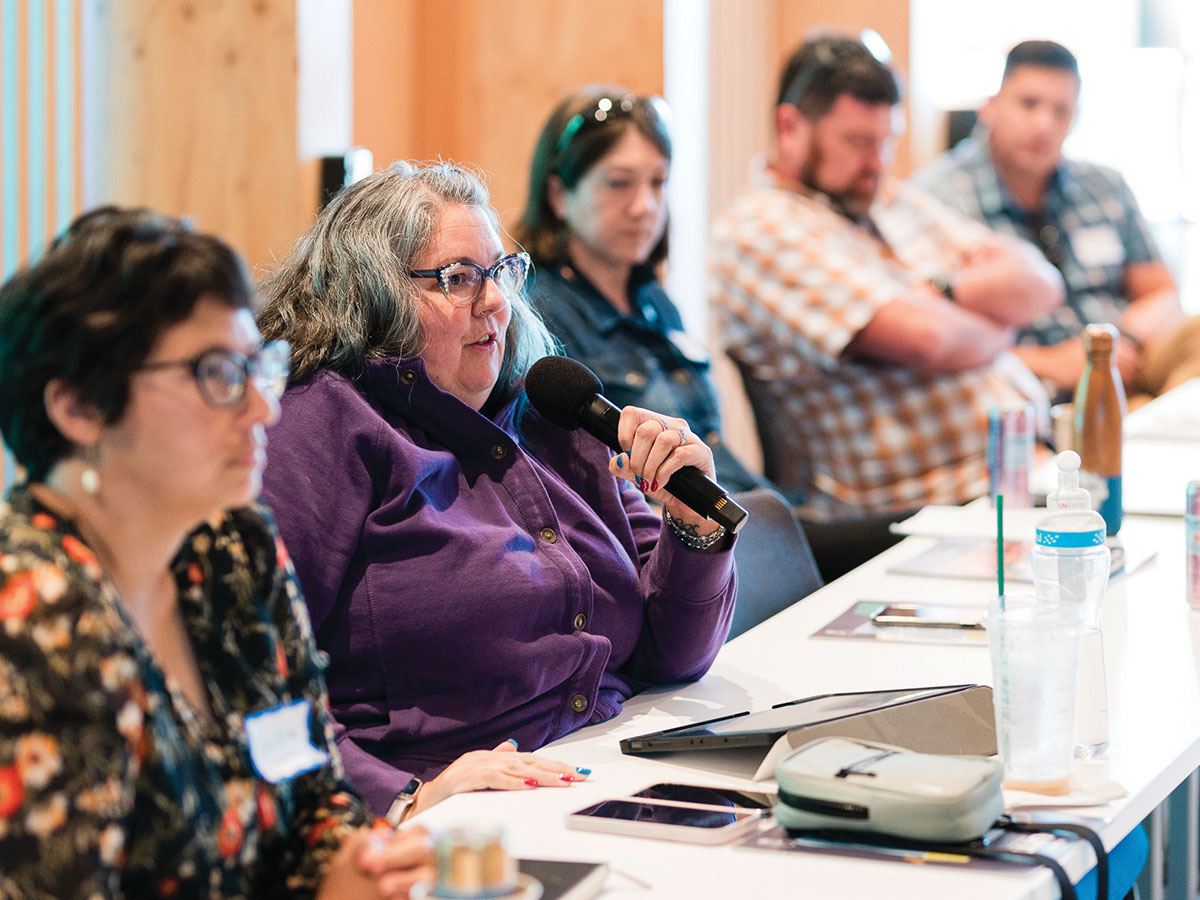
With the recent release of the 2020 edition of the Consumers Guide to Grants Management Systems, we have a valuable new resource for foundations that are eager to switch to a new system.
The thing is, these are no longer simply the grants management systems of the past. In the past five years, these tools have evolved from back-office systems used primarily by grants management teams to beginning-to-end grantmaking systems that can – and should – be used by a foundation’s entire staff to support the complete grantmaking process, from strategy development to grant closure.
The language we use to talk about these systems matters
When I first started working in foundations almost 20 years ago, I don’t remember using the term “grants management system.” We all used the same system, and we referred to it by name. Grant proposals (sometimes two or three physical copies) were sent to the office by mail. Foundation staff logged the basic organization and proposal information into the system and then created the paper file folder to store the grants documents. Pretty much everything else about the grantmaking process happened outside of the system – that file folder was routed from desk to desk until the grant was approved, then it made its way back to the file room where it resided, mostly untouched, until the grant was closed.
As new systems became available, we needed a collective term to refer to them and started using “grants management systems.” That term made sense as the main purpose of these systems continued to be storing the basic transactional information about organizations, grants, payments, and reporting requirements. The foundation grants management professional was also still the primary system user, entering data and running reports about active grants and outstanding grantee reporting requirements for program staff.
Most program staff worked outside the system, using numerous shadow spreadsheets to track the pipeline of organizations they hoped to invite to submit proposals as well as to track expected payout for their program area for current and future years.
As technology advanced and cloud computing became the norm, the systems have evolved to be more than transactional databases. As we see in the updated Consumers Guide, vendors have added features to enable internal review and approval, pipeline planning, program and grantee budgeting, and tracking meetings and site visits. These systems have evolved to integrate many of the grantmaking responsibilities of program, legal, financial, operations, and executive staff to support aligned, strategic, and informed grantmaking.
Yet we continue to use the term “grants management system,” which seems to imply that the system should only be used by grants management professional and that the functionality is still limited to recording basic back-office data. In reality, these systems are the essential backbone of a foundation’s core work — grantmaking. Now, more than ever, it is critical for all foundation staff, especially program and senior staff, to widely adopt the system and use it in a centralized way to support all aspects of the foundation’s grantmaking practice and grantee relationships.
To better signify the importance of everyone participating in this system, we encourage you to start using the term “foundation grantmaking system.”
The benefits of broad staff adoption
When all staff use the foundation grantmaking system, there is increased visibility and transparency at the institution. Broad staff adoption helps prevent common institutional challenges with communication, duplication of work, missed deadlines, and bottlenecks.
Here’s how your foundation will benefit from reframing your system as the foundation grantmaking system:
- Preserve institutional knowledge: We often hear foundation executive staff mention wanting to use the system to learn about the last conversation their program staff had with a grantee. Many grantmaking systems now go beyond simply tracking organization and grant contacts and can provide deeper relationship management capabilities, like recording notes from grantee meetings and site visits. This allows the foundation to more effectively maintain institutional knowledge of the grantee and grant relationship. Grantees also benefit from having their institutional history available for new program staff to better understand the nuances of a longer-term partnership.
- Work smarter: Almost every program person I have met uses some version of the same shadow spreadsheet to track their grantmaking pipelines and program budgets, and they spend hours each week reconciling their offline Excel files back to the grantmaking system. During system implementations, we help people think through how to move this work into the grantmaking system to allow for real-time visibility to grant information across the foundation, reduce overall time to grant approval, and improve the accuracy of planning and forecasting. Although a big change-management undertaking, we have heard from program staff that eliminating the use of side systems is one efficiency that notably frees up their time to perform more value-added work, including having regular relationship-strengthening check-in calls with their grantees.
- Elevate grants management professionals: Because of the configurable nature of most foundation grantmaking systems, grants management professionals now serve as the business owners of these systems. In this role, they are responsible for implementing ongoing system enhancements, including building and updating workflows, creating email and letter templates, and producing internal reports. Grants management professionals also train staff to use the grantmaking system. They are well positioned for this role because their function intersects with program and operations teams. All of this points to the evolving role of the foundation grants management professional, who is a strategic partner with program teams, advises on grant structures, integrates trust-based philanthropy practices, and analyzes grant data to spot issues and trends.
Grantmaking is the core work that foundations perform. We need to further encourage all foundation staff – including those from program, finance, and legal teams who have always been involved in the grantmaking process – to access the system daily to conduct their work.
So where do we go from here?
It’s time to champion the value these systems bring to the entire institution — they truly make our jobs easier and better. By changing how you talk about your foundation grantmaking system, you can help reinforce that the system is the central place for institutional knowledge on your foundation’s grants and grantee relationships and that all foundation staff should use the system to support the complete grantmaking cycle.
Many foundation staff are unaware of the robust system features and are resistant to learning and adopting the new software. This is expected and normal. Grants management professionals can help showcase the potential ways the system can better support a more holistic approach to grantmaking. When senior leaders use the system for planning and budgeting meetings, and they attend system training sessions alongside their colleagues, they reinforce the system’s importance across the whole foundation.
Excel wasn’t designed to be a database, and today’s grants management systems aren’t designed to be used only by grants management professionals. Let’s call the systems what they really are – foundation grantmaking systems – and send a clear message that these systems need to be used by all foundation staff.


